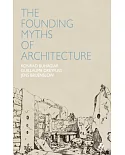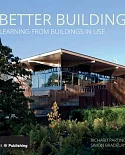Today, in the face of the challenges confronting their profession, from the economic crisis to an urgent need for longer-lasting, more affordable, and greener construction, architects have been
forced to reconsider the relationship between architecture and society, between buildings, their inhabitants, and the environment. No single individual did more to build this discourse than
Robert Gutman. Sometimes referred to as the sociological father of architecture, Gutman in his writing and teaching initiated a conversation about the occupants of buildings and the forms,
policies, plans, and theories that architects might shape. A sociologist by training, Gutman infiltrated architecture s ranks in the mid-1960s. Over the next four decades at Princeton s School
of Architecture, Gutman wrote about architecture and taught generations of future architects, while still maintaining an outsider status that allowed him to see the architectural profession in
an insightful, unique, and always honest way.
Architecture From the Outside In is the only book of Gutman's collected essays to span his entire career, with the earliest essay included from 1965, and the most recent from 2005.
Before his death in 2007, Gutman wrote a new introduction for the book, its chapters, and each of the included essays. The fourteen essays included here are the rare case of valuable historical
documents that remain relevant to architects practicing today. Editors Dana Cuff and John Wriedt added twelve dialogues by some of Gutman's former students, now some of the best-known
architects and theorists of today: Bryan Bell, Deborah Berke, Peggy Deamer, Frank Duffy, Keller Easterling, Robert Fishman, Marta Gutman, Wallis Miller, David Mohney, Patricia Morton, Eric
Mumford, and Sarah Whiting. These essays give a contemporary response to Gutman's work, and make Architecture From the Outside In an invaluable addition to any contemporary architect's
library.





















